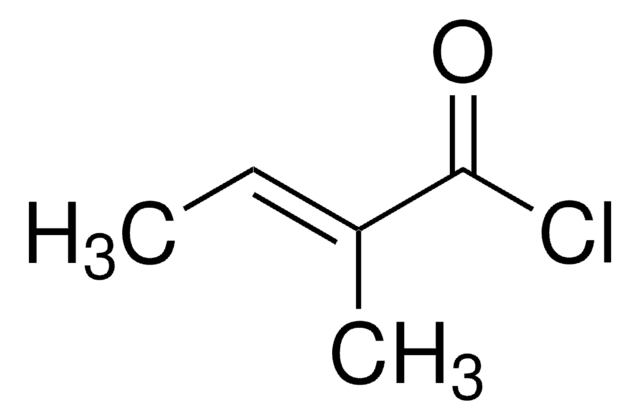Kluczowe dokumenty
911747
C5 Lenalidomide-PEG3-NH2 hydrochloride
≥95%
Synonim(y):
Blok konstrukcyjny degradera białek dla badań 11779, C5 Koniugat lenalidomidu, Koniugat ligandu Crosslinker-E3 Ligase, Szablon do syntezy ukierunkowanego degradera białek, chlorowodorek 2-(2-(2-(2-aminoetoksy)etoksy)etoksy)-N-(2-(2,6-dioksopiperydyn-3-ylo)-1-oksoizoindolin-5-ylo)acetamidu
About This Item
Polecane produkty
ligand
C5 Lenalidomide
Próba
≥95%
Formularz
powder or crystals
przydatność reakcji
reactivity: carboxyl reactive
reagent type: ligand-linker conjugate
grupa funkcyjna
amine
temp. przechowywania
2-8°C
ciąg SMILES
O=C1N(C2CCC(NC2=O)=O)CC3=CC(NC(COCCOCCOCCN)=O)=CC=C31.Cl
Zastosowanie
Zautomatyzuj swoje PROTAC oparte na CRBN-PEG z Synple Automated Synthesis Platform (SYNPLE-SC002).
Inne uwagi
Budowanie 11779 degraderów do ukierunkowanej degradacji białek
Ukierunkowana degradacja białek za pomocą małych cząsteczek
Małocząsteczkowe PROTACS: Nowe podejścia do degradacji białek
Ukierunkowana degradacja białek: od biologii chemicznej do odkrywania leków
Informacje prawne
produkt powiązany
Hasło ostrzegawcze
Warning
Zwroty wskazujące rodzaj zagrożenia
Zwroty wskazujące środki ostrożności
Klasyfikacja zagrożeń
Repr. 2 - STOT RE 2
Organy docelowe
Blood
Kod klasy składowania
11 - Combustible Solids
Klasa zagrożenia wodnego (WGK)
WGK 1
Temperatura zapłonu (°F)
Not applicable
Temperatura zapłonu (°C)
Not applicable
Wybierz jedną z najnowszych wersji:
Certyfikaty analizy (CoA)
Nie widzisz odpowiedniej wersji?
Jeśli potrzebujesz konkretnej wersji, możesz wyszukać konkretny certyfikat według numeru partii lub serii.
Masz już ten produkt?
Dokumenty związane z niedawno zakupionymi produktami zostały zamieszczone w Bibliotece dokumentów.
Produkty
Protein Degrader Building Blocks are a collection of crosslinker-E3 ligand conjugates with a pendant functional group for covalent linkage to a target ligand.
Nasz zespół naukowców ma doświadczenie we wszystkich obszarach badań, w tym w naukach przyrodniczych, materiałoznawstwie, syntezie chemicznej, chromatografii, analityce i wielu innych dziedzinach.
Skontaktuj się z zespołem ds. pomocy technicznej









